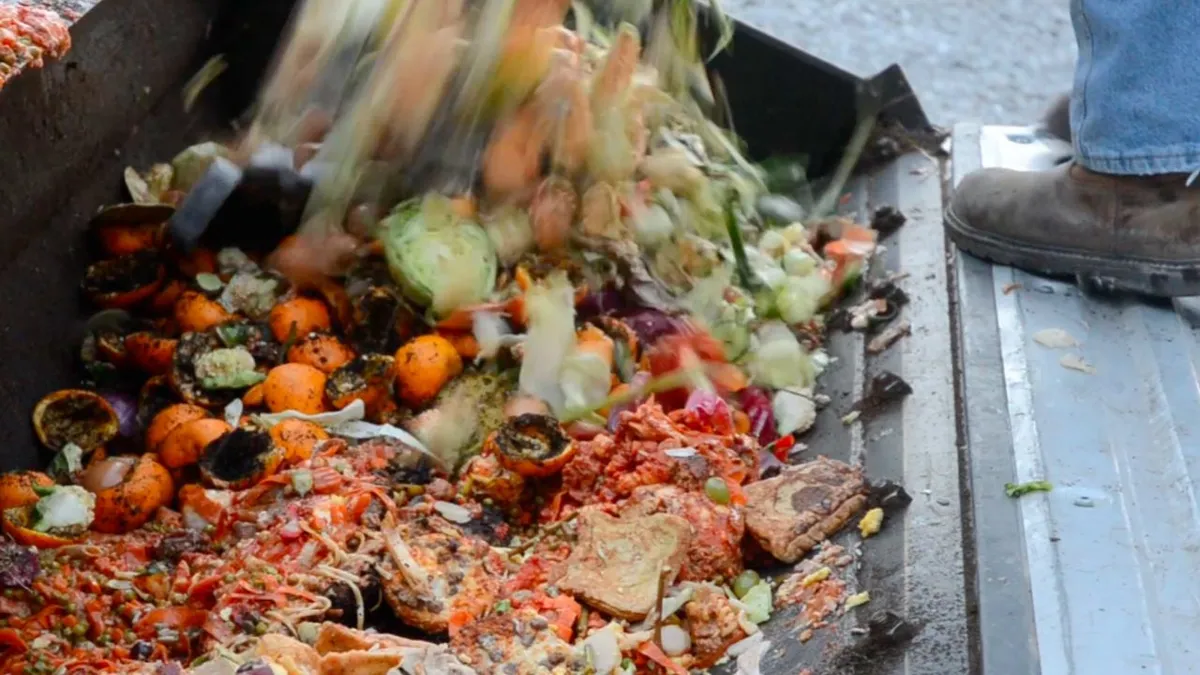Dive Brief:
- Developed countries tend to have a larger percentage of their food waste occur at the consumer level compared with developing nations, where waste is more likely to occur during production and handling, according to data from the UN's Food and Agriculture Organization (FAO) analyzed by the World Resources Institute.
- Less-developed areas tend to have more issues related to factors like poor infrastructure, whereas consumer preference can be more likely to cause waste in the United States and Europe, Brian Lipinski, an associate at the World Resources Institute, told Supply Chain Dive.
- Countries and companies are beginning to take steps to curb food waste. Lipinski pointed to the United Kingdom as an example, which appointed a food waste chief last year. The U.K. has seen its food waste decline by 12% between 2007 and 2015, according to Wrap, an organization that collects data on the U.K.'s waste. The U.S. also has an initiative encouraging companies to reduce food waste by 50% by 2030.
Dive Insight:
The BCFN Foundation and The Economist Intelligence Unit use FAO's methodology for measuring food waste developed to get country-level estimates in its Food Sustainability Index. The U.S. is estimated to have the largest amount of food waste per person at about 210 pounds each year.
While it may be easy to point fingers at picky U.S. consumers, there are issues throughout the supply chain. An estimated 40% of the waste in North America is caused by something other than the consumer, according to FAO.
At the production level, these losses can result from not having enough labor to harvest an entire crop. It can also come from retailers placing a premium on quality and deciding to turn away "ugly" produce. While there may be a secondary market for this produce — tomato sauce for tomatoes, or applesauce for apples — this doesn't exist for every product.
During transportation, items need to be properly refrigerated and packaged, and items that get held up in customs can go bad if held too long, Lipinski said.
Retailers will also order in abundant quantities to ensure their produce sections don't look picked over. "That's just something that they have to order for. And so they're mostly very good at ordering what they need, but it doesn't always play out perfectly," Lipinski noted.
One report from ReFED estimates the U.S. spends $218 billion to grow, process, transport and dispose of food that is never eaten. Retailers account for about 8 million tons of waste in the U.S., according to ReFED.
ReFED's solutions include consumer-facing awareness campaigns and a standardized donation strategy. Investments in cold chain management, dynamic routing, better forecasting and inventory management could have the "greatest profit potential" for retailers looking to reduce food waste, concludes ReFED's report.
Balancing the desire to decrease food waste with other internal retail metrics — such as in-stock and quality — can be difficult for retailers. As a result, waste prevention programs are not always the main focus for grocers, the report notes.
Data is another big problem in food waste, said Lipinski. FAO's numbers — considered to be the gold standard for worldwide food waste — have not been updated since 2011. Metrics need to be standardized and tracked on a regular basis to keep tabs on improvements, Lipinski said.
"One of our major focus areas is on measurement and trying to encourage companies and countries to measure the amount of food loss and waste that are occurring within their own boundaries," he said. "Because as I'm sure you're discovering, there's not very much good data."
All 15 retailers interviewed for the ReFED report have begun some kind of food recovery program, but only about half were "aggressively pursuing prevention." Changing this might require shifting focus to the financial benefits of lowering food waste numbers. Retailers showing interest in making changes tend to see an economic benefit in reducing waste, according to Lipinski — ReFED, for instance, points out that donations can be claimed as tax deductions.
This story was first published in Supply Chain Dive's weekly newsletter, Supply Chain Dive: Operations. Sign up here.















